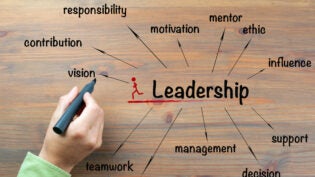
Baby boomers own over 2 million businesses employing more than 25 million people in the United States. Many will be retiring or selling their businesses in the next few years and for some of these business owners the transaction will be a success. These owners will receive the value from their company to provide them with a secure future and their employees will be secure in their roles, while other owners will be left with little or nothing for their years of hard work and commitment to the company and employees who help build the company.
Those who have a successful transaction do so because they have a solid exit plan with a Strategic Succession Plan, which they have been implementing for several years prior to the sale of their business.
Succession Planning focuses on the human capital within a company. It is a systematic approach to ensuring continuity of leadership, knowledge, and expertise within an organization by developing employees and recruiting new talent to meet the future needs of the organization. It is having the right people, in the right seats, at the right time, doing the right things. A true succession plan includes not only all leadership positions but key knowledge roles such as those with technical, product and creative expertise critical to an organization’s ongoing success. Unlike exit planning, succession planning is an ongoing process that takes place year over year.
In my book, Replaceable, An Obsession with Succession, I share the story of two business owners, one who prepared for his succession and the other who didn’t. There were three key elements that made Dan’s succession plan a true success: He was ready, started early, and committed to the process.
Be Ready
Most business owners I’ve worked with haven’t taken the time to plan what they will do after their successor takes the reins. In fact, a mere 4% of business owners have a formal, written plan for life after business. This low figure shouldn’t surprise anyone who knows a business owner. They have put their life into the business and put hobbies and other outside interests on the back burner for years.
Succession planning readiness includes the readiness of the business owner. If you are the business owner, a best practice is to start focusing on what your life purpose will look like in the future and create a transition plan allowing you to step back from your business incrementally. In my book, Dan slowly worked his way out a job over several years.
Some common activities I have seen business owners get involved with as they started stepping back include travel, reconnecting with friends, revisiting old hobbies, learning new skills, obtaining board positions on non-profits, and exercising regularly. Ultimately your job is to become replaceable and to let those who you have developed over the years step up to greater responsibilities.
Start Early
What do I mean by starting early? Because Succession Planning is about having the right people, in the right seats, at the right time, and doing the right things. Talent is hard to find and once found they are hard to retain. And developing talent takes time, it doesn’t happen overnight.
I recommend that even if you aren’t planning an exit within the next five years, start the process now. Succession Planning not only benefits you, the owner, but it benefits all the talent you have in your organization by focusing on developing employees to their full potential.
Those companies who adopt succession planning as part of their annual planning process are the ones who will be on the radar of PE firms and strategic buyers when it comes time to exit the business. And, if you are like Dan in my book, Replaceable, an Obsession with Succession, you may receive a full cash price with no earn out, a true unicorn in the business transaction world.
Commit to the Process
Remember succession planning is a process not an event. When you decide you are personally ready as business owner/CEO to take on succession, implementation is ongoing and dynamic. Assessment of talent will continue as high potentials and key employees are developed, redeployed, and promoted and key positions may change as your strategy changes.
The first step in the Succession Planning Process is to bring your team together. You will be preparing your management team for what lies ahead. Your team’s goal is to develop a strategic succession plan and review it annually to keep it alive and healthy. As CEO, President, Business Owner you will convey the importance of this initiative to your team. All members of the team need to embrace the mission of succession planning and be fully engaged. Great succession planning takes dedication, focus and true commitment by your team.
Your team members will have control and/or influence of the steps within the Succession Planning process. Ultimately the CEO will be accountable for the plan because without CEO support and accountability, succession planning is unsustainable. While HR should be involved, they should not be the one accountable for the plan. Otherwise, succession planning becomes an exercise of filling out forms and documenting opinions of high potentials.
Conclusion
Strategic succession planning is the deciding factor in whether your business will not only survive but thrive even when one or more key positions suddenly become vacant.
You can think of a succession plan like an insurance policy. Whether it’s health insurance, car insurance, or life insurance, these policies are meant to help make sure you or loved ones have assistance in weathering a crisis. A solid succession plan can do that for your business.
The difference, of course, is in the time and effort it takes to do succession planning right. It’s not nearly as easy as paying a monthly premium on an insurance policy. If, however, you want your business to continue without you; if you want to give your business the greatest chance of continuing to be a place of meaningful work for its employees, then you owe it to yourself and to them to begin the succession planning process sooner than later.
672 Views












